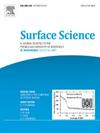Impact of Ni doping on the catalytic activity and stability of RuO2 electrocatalyst for the oxygen evolution reaction in acidic media
IF 2.1
4区 化学
Q3 CHEMISTRY, PHYSICAL
引用次数: 0
Abstract
Doping with transition metals (TMs) has been recognized as an effective strategy to improve the material stability of RuO2 electrocatalysts for the oxygen evolution reaction (OER). However, the detailed mechanisms of material degradation and the impact of TM doping remain unclear. In this work, using density functional theory (DFT) calculations, we demonstrate that the experimental conditions under which OER proceeds can also trigger the degradation of RuO2 through Ru dissolution, and that Ni doping can suppress this dissolution process. Specifically, the formation of RuO4(aq), a product of the dissolution reaction, becomes thermodynamically favorable at a bias comparable to OER overpotentials. Ni doping makes RuO4 formation less favorable without significantly altering the OER pathway. Furthermore, the Ru-O bond near a Ni dopant becomes stronger, making the reaction pathway for Ru dissolution more difficult to proceed. By expanding the atomistic understanding of the role of Ni doping on OER and material stability, this work paves the way for the development of high-performance and sustainable electrocatalysts for water splitting.

Ni掺杂对RuO2电催化剂在酸性介质中析氧反应活性和稳定性的影响
在RuO2电催化剂中掺杂过渡金属(TMs)是提高其材料稳定性的一种有效策略。然而,材料降解的详细机制和TM掺杂的影响尚不清楚。在这项工作中,我们使用密度泛函理论(DFT)计算,我们证明了OER进行的实验条件也可以通过Ru溶解引发RuO2的降解,并且Ni掺杂可以抑制这一溶解过程。具体来说,溶解反应的产物RuO4(aq)的形成在热力学上变得有利,其偏置与OER过电位相当。镍的掺杂使RuO4的形成变得不那么有利,但没有明显改变OER途径。此外,Ni掺杂物附近的Ru- o键变得更强,使得Ru溶解的反应途径更难进行。通过扩展Ni掺杂对OER和材料稳定性作用的原子性理解,这项工作为开发高性能和可持续的水分解电催化剂铺平了道路。
本文章由计算机程序翻译,如有差异,请以英文原文为准。
求助全文
约1分钟内获得全文
求助全文
来源期刊

Surface Science
化学-物理:凝聚态物理
CiteScore
3.30
自引率
5.30%
发文量
137
审稿时长
25 days
期刊介绍:
Surface Science is devoted to elucidating the fundamental aspects of chemistry and physics occurring at a wide range of surfaces and interfaces and to disseminating this knowledge fast. The journal welcomes a broad spectrum of topics, including but not limited to:
• model systems (e.g. in Ultra High Vacuum) under well-controlled reactive conditions
• nanoscale science and engineering, including manipulation of matter at the atomic/molecular scale and assembly phenomena
• reactivity of surfaces as related to various applied areas including heterogeneous catalysis, chemistry at electrified interfaces, and semiconductors functionalization
• phenomena at interfaces relevant to energy storage and conversion, and fuels production and utilization
• surface reactivity for environmental protection and pollution remediation
• interactions at surfaces of soft matter, including polymers and biomaterials.
Both experimental and theoretical work, including modeling, is within the scope of the journal. Work published in Surface Science reaches a wide readership, from chemistry and physics to biology and materials science and engineering, providing an excellent forum for cross-fertilization of ideas and broad dissemination of scientific discoveries.
 求助内容:
求助内容: 应助结果提醒方式:
应助结果提醒方式:


